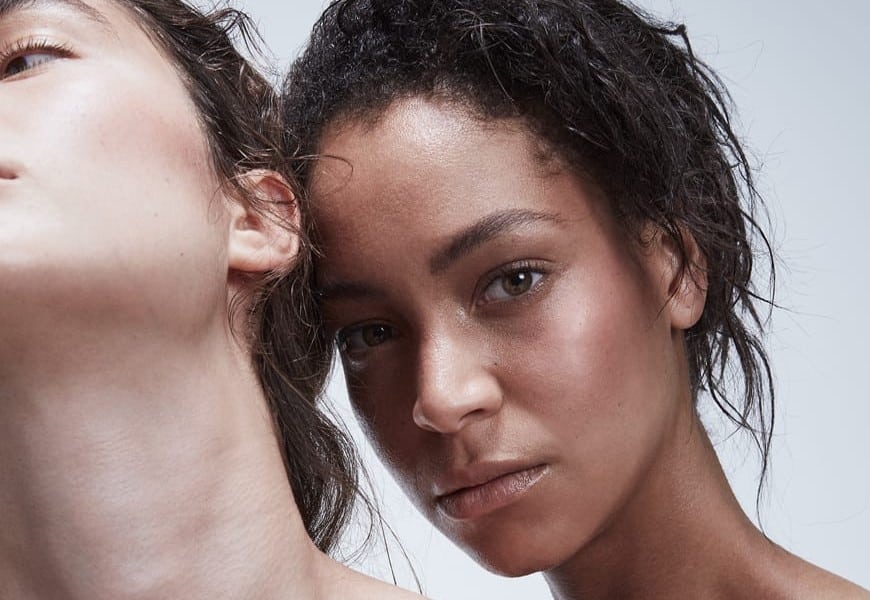
Over the last few years, when International Women’s Day has come around, it has been met with mixed feelings. What is supposed to be one of the most important days in the women’s rights movement has become increasingly commercialised – even used as a tool to normalise hustle culture.
The critical messages are being lost in a sea of reductive pink cupcake parties and cringey slogans. And it’s a problem – because this day has never been more vital for women everywhere.
As we watch our sisters in Iran fighting for their right to safety and freedom, mourn for our sisters in America who’ve lost the right to their bodily autonomy and grieve for our sisters in Gaza who make up 70% of the deaths, we need to look back to the reasons why we have an International Women’s Day at all.
We cannot simply boil gender inequality down to singular issues, because gender inequality plagues much more than our bank accounts, the air conditioning temperature in an office or the ability to get a promotion – especially for women of colour and trans women, who face far more barriers and disadvantages day-to-day.
Many of gender inequality's core aspects are invisible biases, things that fly under the radar, aspects that you maybe haven’t even thought of as being damaging to women.
Women live in a world built for men, and that comes with real harm and even death for people who don’t fit that mould. Token gestures and pink decals just don’t go nearly far enough – here is where we ought to be placing our attention this March 8, International Women’s Day.
*Editor’s note: in the context of this article, we use “female” to denote people with anatomically female sex characteristics. We use “women” to denote gender and to refer to people who identify as women. There may be exceptions when language is taken from a direct quote.
If you're a woman, you're more likely to die in a car crash
Did you know that women are 17% more likely to die in a car crash? Women are also 73% more likely to sustain serious injuries in a car crash.
It’s only until recently that car manufacturers started making anatomically female crash test dummies. But many of them still don’t include the female dummies in all the testing.
The result is that many cars have been and still are designed and made without considering the height, weight and structural requirements of females. This leads to increased risk for those with female anatomy - who are mostly women.
If you're a pregnant woman, homicide is a leading cause of death
We know all too well that intimate partner violence is a growing scourge in Australia and around the world. One woman per week is killed in Australia by her current or former partner. Like horrifying, femicidal clockwork.
But did you know that this risk is actually more acute for pregnant people? For example, “women in the US are more likely to be murdered during pregnancy or soon after childbirth than to die from the three leading obstetric causes of maternal death (high blood pressure disorders, haemorrhage, or sepsis).” These homicides are linked to intimate partner violence.
Medications are less likely to work effectively on females – especially generic medicines
Did you know that the second most common adverse reaction females have to medicines is that they don’t work? It was a horrifying discover I found in a book called Invisible Women.
Females are treated as inconvenient vessels when researching the effectiveness of drugs and in some cases have been routinely excluded. Our pesky monthly cycle of hormones can impact the effectiveness of medication. Our higher likelihood of suffering from an autoimmune disease or being on antidepressants means that we’re often ruled out of certain drug trials. Plus, women’s higher burden of household labour and childcare means that it can be harder to find women with the time to participate in clinical research.
For decades, the medical research systems in place have not accounted for these unique needs of women. It’s led to a system where today’s researchers may not have enough women in the studies of their drugs – or may not have women at all. And when you don’t test drugs on women, sometimes they don’t work effectively on women. Females are 50-75% more likely to have adverse drug reactions than males.
The problem deepens when you look at generic medicines. Caroline Criado Perez writes in Invisible Women: “Drug trials for generic drugs are much less rigorous than the original trials, having only to demonstrate equal bioavailability, and they are conducted almost exclusively in young males.”
This matters because even with the same active ingredient, different inactive ingredients and different fabrication technology can affect how the body processes the drug – which can limit the drug’s effectiveness.
And sure enough in 2000, the FDA’s Center for Drug Evaluation and Research showed “statistically significant differences between men and women in bioequivalence for most generic drugs compared with reference drugs.” This came down to a difference in the way males and females metabolise the secondary ingredients, hormonal status and intra-subject variability plays a role also.
In countries like the US, 80% of prescriptions are filled with generic medicines – so the problem is significant.
Over a third of single women retire in poverty
In Australia, when women reach retirement age, they will have 42% less in their superannuation accounts than men.
This startling figure from WGEA – who recently released data about the gender pay gap in Australia’s biggest companies – highlights that many women in Australia retire into difficult circumstances. In fact, data from HILDA shows that 38.7% of single women in retirement live in poverty.
The superannuation system we have now overwhelmingly disadvantages women for many reasons. Firstly, it’s linked to paid work, and we know that there is still a substantial pay gap between men and women. Also, women are more likely to move in and out of paid work due to family and care responsibilities. Then we need to consider that, parental leave is currently one of the only leave types that does not accrue superannuation. And women are far more likely to take parental leave (maternity leave) than men.
Cooking kills millions of women
Stove cooking is killing millions of people – and they’re mostly women.
Chapter seven of Invisible Women reveals: “cooking on a traditional stove in an unventilated room is exposed to the equivalent of more than a hundred cigarettes a day.” In fact, toxic fumes from stove cooking kills more people than malaria every year.
But this problem is not just limited to those cooking on traditional stoves using biomass fuels (wood, crop waste etc). You’ve probably seen that New York in the US and also Victoria, Australia have recently banned gas stoves in new builds. This is because the burning gas puts toxic fumes into the air like carbon monoxide, nitrous oxides and formaldehyde. There is also a strong link between asthma and gas stove cooking.
This becomes a women’s issue because in almost every society, women do the bigger share of domestic labour. Globally, women do 2 to 10 times the amount of unpaid domestic work compared to men.
And of course, much of this domestic work involves cooking. If we look at sub-Saharan Africa, women can spend 20 hours a week cooking over traditional stoves.
Females are more likely to severely injure themselves when playing sports
The assumption that females are just smaller males means that females play sports in male shoes, on male pitches to a male schedule. But females are not just smaller males. There are so many differences between the sexes – and when you force a female body to work in the same way a male one, this leads to injury.
Looking at ACL tears in particular, “The incidence of female to male is 3.5 times greater in basketball and 2.8 times greater in soccer.”
There are many reasons that contribute to this complex issue. Looking at female anatomy, females will generally have wider hips and their knees often tilt inward. As such, females need different support from their shoes. Football boots for example often fail to account for the shape of female feet and may not offer the kind of support a female body requires.
Additionally, the hormonal fluctuations during a menstrual cycle can actually increase and decrease the elasticity of the collagen in the knee. There will be moments during the month where females become more susceptible to tears. A workout and training schedule that does not account for this, can lead to increased injury.
Additionally, female players are more likely to play sports on artificial turf - another issue of sexism. Artificial turf has been shown to increase the risk of ACL tears.
Women are more likely to die in natural disasters
Did you know that women and children are 14 times more likely to die in a natural disaster than men? This fact was actually a core theme of International Womens Day in 2022.
This is a particularly complex issue. One key factor is the higher care burden women have; in a natural disaster, women are more likely to have children or older relatives with them when they need to flee. During Hurricane Katrina, many of the victims “trapped in New Orleans were Afro-American women with their children.”
Also religious customs may mean that women are less likely to learn to swim and if put in a situation where they need to swim, modest clothes worn for religious or traditional reasons can constrain their ability to stay afloat. This was a factor for the Indian Ocean Tsunami in 2004 where 70% of the people killed were women.
Additionally, women tend to avoid shelters, as they are more likely to be victims of sexual assault following a disaster.
Females are at an increased risk of RSI
A female’s smaller frame and lower average muscle mass increases their risk of RSI compared to males. But it’s compounded by the reality that the products we use every day are not designed for our bodies.
Phones for example are designed around the average male hand size. Female’s hands are about 2.5-5 centimetres smaller than mens. So, it becomes more cumbersome and straining for smaller hands to navigate the screen.
This is just the tip of the iceberg, everything from spanners to art portfolios to office chairs are typically designed for the male body. It means that everyday, females are handling objects that are straining their bodies.
Females are 50% more likely to be misdiagnosed after a heart attack
What image comes to mind when you imagine what a heart attack looks like? Someone clutching their chest? Did you know that when females experience heart attacks they often experience neck, jaw or back pain?
A UK study showed that females were 50% more likely to be misdiagnosed following a heart attack.
The American Heart Association says that the first step towards a heart attack diagnosis is a healthcare provider recognising the symptoms. Unfortunately there can sometimes be a failure to conflate the unique symptoms that females experience as those of a heart attack owing to a bias towards looking for typically male symptoms only: “For decades, women have been evaluated by a protocol geared toward men.”
Neglect of female health leaves us in persistent pain
There are multiple, accessible treatments for male pattern baldness. Even more for erectile dysfunction. But what about debilitating conditions like Polycystic Ovarian Syndrome and Endometriosis that cause “significant social, public health and economic implications”? Unfortunately, we’re still waiting, likely due to female health being an underfunded area.
There is currently no cure or specifically treatment designed for PCOS - despite the fact that up to 1 in 8 females have the disease (8-13%). This disease doesn’t just contribute to infertility, it causes pain, is linked to an increase in cortisol and it’s actually a huge risk factor for type 2 diabetes.
Roughly 1 in 10 females will suffer from endometriosis, there is no cure. There are some oral and also injectable treatments that can assist with pain and inhibit cell growth but most are hormonal contraception-style treatments - including the recently-approved Ryeqo. Surgery is an option for some who have the means to cover the cost and take time off work to recover.
But the reality of this situation is that many females go through life suffering debilitating pain and endocrine symptoms with no option but to grin and bear it.
Women pay more for everyday products
Gender pricing (also known as The Pink Tax) is a common tactic and it often means that women end up paying more for household essentials. According to the World Economic Forum, women’s personal care products, for example, are 13% more expensive than mens.
This inequality is unscored by the fact that women already earn less than men. Women in Australia earn 12-20% less depending on which data you look at - and paying more for the same products exacerbates what is already a huge socio-economic disadvantage.



